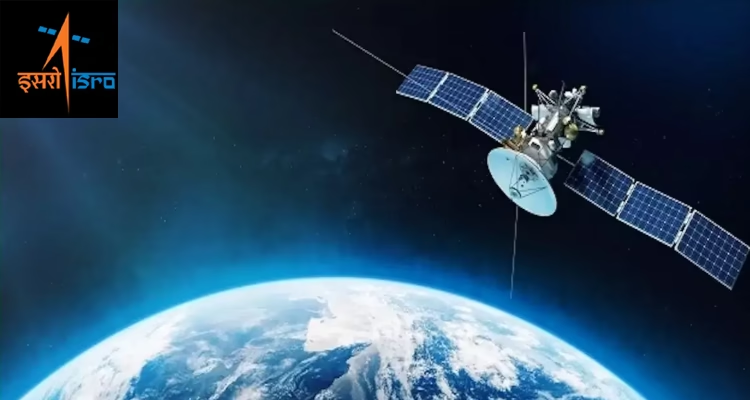
New Delhi: In a bold leap towards space-based defence readiness, India is set to launch 52 surveillance satellites to keep a close watch on its borders with China and Pakistan and to monitor activities across the Indian Ocean Region.
This mega project is part of Phase 3 of the Space-Based Surveillance (SBS) programme and comes in the wake of critical lessons learned during Operation Sindoor (May 2025).
Approved by the Cabinet Committee on Security, the ₹26,968 crore initiative will be rolled out by 2029, significantly boosting India’s military surveillance capabilities. The project is being spearheaded by the Defence Space Agency (DSA) in collaboration with ISRO, and marks India’s most ambitious defence-space programme to date.
Out of the 52 satellites, 21 will be launched by ISRO, while 31 have been outsourced to private Indian companies—a move to accelerate deployment across low-Earth and geostationary orbits. These satellites will provide real-time, high-resolution imagery, allowing Indian forces to track threats, troop movements, and naval activity faster and more precisely.
This space shield is being designed to drastically reduce India’s military OODA loop (Observe, Orient, Decide, Act)—a critical factor in outpacing enemy moves in a modern conflict scenario.
In a parallel move, the Indian Air Force is planning to acquire High-Altitude Pseudo Satellites (HAPS)—unmanned aircraft that operate in the stratosphere and can hover over targets for weeks, offering unmatched surveillance capabilities.
During Operation Sindoor, domestic satellites like Cartosat, alongside foreign commercial imagery, played a key role in tracking enemy build-ups, underlining the importance of indigenous surveillance infrastructure. Now, India aims to take full control of its surveillance grid.
Defence planners are also working on a comprehensive military space doctrine and developing a satellite shield to counter growing threats from China, which now controls over 1,000 military-grade satellites, including anti-satellite (ASAT) weapons and advanced ISR systems.
With this massive satellite push, India is not just looking to defend its skies—but to dominate the space frontier, where the wars of the future are already being planned.
🔹 Key Highlights:
-
52 Defence Satellites to Be Launched:
-
India will launch 52 dedicated surveillance satellites under Phase 3 of the Space-Based Surveillance (SBS) programme.
-
Aimed at monitoring borders with China and Pakistan and tracking activity in the Indian Ocean Region.
-
-
Massive Investment in Space Defence:
-
The plan has a total budget of ₹26,968 crore, approved by the Cabinet Committee on Security.
-
Targeted for full deployment by 2029.
-
-
Joint Effort: ISRO + Private Sector:
-
ISRO will launch 21 satellites.
-
31 satellites will be developed and launched by private Indian companies, expediting execution.
-
-
Enhanced Surveillance Capabilities:
-
Satellites to be deployed in Low Earth Orbit (LEO) and Geostationary Orbit (GEO).
-
Will provide high-resolution imagery, faster revisit times, and real-time threat detection.
-
-
Reducing the OODA Loop:
-
The system is designed to shorten the OODA (Observe, Orient, Decide, Act) loop, enabling faster military response.
-
-
Operation Sindoor Was a Turning Point:
-
Surveillance gaps exposed during Operation Sindoor (May 2025) highlighted the urgent need for a dedicated satellite network.
-
Satellites like Cartosat played a crucial role in monitoring enemy movements.
-
-
Indian Air Force Eyes High-Altitude Drones:
-
Plan to acquire High-Altitude Pseudo Satellites (HAPS)—unmanned, long-endurance drones operating in the stratosphere for continuous surveillance.
-
-
Countering China’s Space Edge:
-
India’s response to China’s growing satellite arsenal—over 1,000 military satellites, including anti-satellite (ASAT) and ISR platforms.
-
Aims to build a satellite shield and a full-fledged military space doctrine.
-
-
Strategic Vision from the Top:
-
Air Marshal Ashutosh Dixit, Chief of Integrated Defence Staff, calls space the “ultimate high ground” in modern warfare.
-
-
Future-Ready Defence:
-
The initiative signals a shift towards space-dominant defence strategy, ensuring vigilance, speed, and technological supremacy.
-



